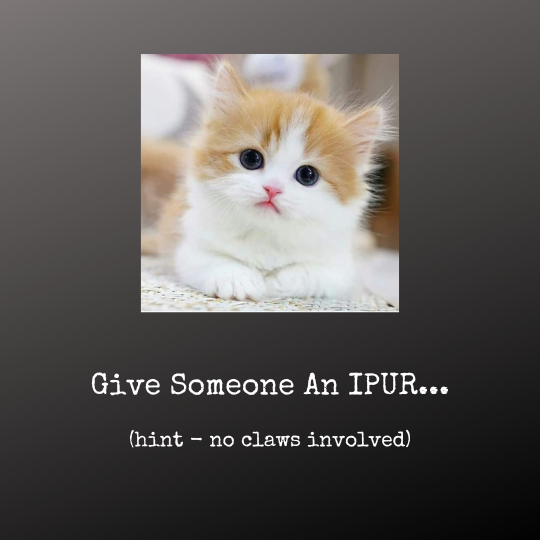Writers are an emotional bunch. We pour our hearts onto the page. We rip our guts out. We flay ourselves open to expose our raw nerves. We “open a vein and bleed.”
So dramatic, we creatives.
For all the difficulty and agony that putting words on the page can sometimes cause authors, taking them out can be even more painful. But not every word that pours (or is wrenched) from our naked souls is dipped in gold leaf. Not all of our writing serves the story. Some of it, in fact, may be hampering it—even as you may be blinded to that fact by the sheer dazzling loveliness of your words, or how hard-won they were, or how truthful and perfect they may feel.
Ironically, despite our dramatic and sanguinary imagery around creating, when it comes time to execute a truly violent act and “kill our darlings” it’s cold dispassion that’s required. It’s one reason editing our own work can be so tough—after working so hard to access all that naked vulnerability and openness and depth, we have to take a step back from it and shift into cool, assessing reason.
Authors must be both victim and killer, to put aside your passion and channel your inner sociopath (oh, come on, I know you have one…)—that detached observer who scopes out the target, evaluates its vulnerability, and then ruthlessly wields the knife.
Here’s how to murder a beloved darling, in three agonizing steps.
Luckily this is usually low-hanging fruit: See if you can name, without consulting your manuscript, the parts or scenes that are your absolute favorites, that you’re proudest of. Think back to the ones that came hardest, but where you finally cracked the nut. Write down the ones that came most easily, where the Muse was singing through you and the story simply poured out. Thumb through the pages and note the scenes that jump out at you as some of your very best writing, or where you yourself are moved by the powerful emotion of your story.
These are your most fertile hunting grounds for darlings.
There’s a saying about writing—the hotter the scene, the colder you write it. A version of this applies to darlings as well: The hotter the prose, the more coldly you must assess it. As counterintuitive as it may feel, usually it’s the sections that you are proudest of, that feel the most effective or emotional or finely wrought to you that can indicate the possible presence of a darling. After all, if you didn’t love them desperately, it wouldn’t hurt so much to contemplate murdering them, would it? (Ah, the epic drama!)
Be brutal. Remember, you’re a killer—there’s no place for sentiment in editing. Once you’ve selected your most cherished passages, ask yourself two key questions:
I happen to be editing two creations of my own right now—a book based on years of previous writing about writing, and a presentation. Both are bloated with too much information and need trimming, but how? This anecdote or example perfectly illustrates the point I’m making; this explanation will illuminate it more clearly; this writing is snappy and funny and engaging. How can these be darlings?
That’s when you move on to question two:
As I’m using it, this question is threefold: What is your overall story about—the central “nut” of it; what is this scene or section about; and what is your attachment to it really about?
Read more: “Do You Know Your Central Story Question?”
The first question will keep you focused on the spine of the story; the second delineates what narrative purpose the darling serves toward that overall intention; and the third helps you get honest with yourself about exactly what you’re clinging to—and all three will help in the next step toward judging whether your darling deserves to live.
But…is it? Really?
What makes a scene or section “essential” to a story isn’t amorphous—it has concrete parameters: Does it move the story forward by advancing the plot, moving the character along her arc, or raising the stakes—preferably all three?
Read more: “The Want, the Action, and the Shift”
Often the justification I hear authors make for a scene whose necessity I may question is, “Yes, but it establishes that…”
This is a red flag for a darling—merely “establishing” something isn’t reason enough for a scene’s existence. Every single line of the story should “establish” something germane about it—as you move the story forward, the holy grail of storytelling, by building the plot, character arc, and stakes. “Establishing” is a subset of “essential”—“essential” is the ultimate arbiter of a darling’s fate.
And if the answer to whether your darling is essential is yes—truthfully, genuinely yes relative to its narrative purpose—then ask yourself one final question:
But I see you, sensitive creatives. I know your tender hearts and naked, vulnerable souls. Don’t worry—I’m going to give you a couple of outs.
Be honest. I know it’s wonderful writing—some of the darlings I’ve advised authors to cut break my own heart because the material is just so good. But what doesn’t serve a story is hampering it—and that means this beautiful darling may actually be a savage saboteur. You are too smart to be snowed by its pretty face and charming ways—if it’s harming your story, that delightful darling must go.
But if you really, genuinely, truly believe that the story is diminished without it in a key way…you put that darling right back where she was. This is your story, your vision, and you get to tell it your way. (But…if your crit partners, editors, beta readers latch onto that darling as a sticking point…perhaps you must resign yourself to letting her die.)
First, knowing they live on can be a great comfort and ease the pain of the execution. But equally important, they may yet serve a valid purpose: as bonus material for readers when your story is published; as a draw for fans to sign up for your newsletter and receive this “secret scene”; maybe even as material you may harvest for another story. The darling is dead; long live the darling.
The pain is real, authors—I understand that as well as anyone, as I mercilessly murder several of my own darlings in my current revisions.
But it also will pass. The hardest part is the actual killing—once those darlings are dead, you may be surprised to see how much stronger your story is without them.
So dramatic, we creatives.
For all the difficulty and agony that putting words on the page can sometimes cause authors, taking them out can be even more painful. But not every word that pours (or is wrenched) from our naked souls is dipped in gold leaf. Not all of our writing serves the story. Some of it, in fact, may be hampering it—even as you may be blinded to that fact by the sheer dazzling loveliness of your words, or how hard-won they were, or how truthful and perfect they may feel.
Ironically, despite our dramatic and sanguinary imagery around creating, when it comes time to execute a truly violent act and “kill our darlings” it’s cold dispassion that’s required. It’s one reason editing our own work can be so tough—after working so hard to access all that naked vulnerability and openness and depth, we have to take a step back from it and shift into cool, assessing reason.
Authors must be both victim and killer, to put aside your passion and channel your inner sociopath (oh, come on, I know you have one…)—that detached observer who scopes out the target, evaluates its vulnerability, and then ruthlessly wields the knife.
Here’s how to murder a beloved darling, in three agonizing steps.
1. Identify the darling
As any self-respecting serial killer will tell you, you must use great discernment in selecting your victims. So much of the challenge of killing darlings is learning to see them in the first place—they are darlings precisely because an author may believe that they’re utterly necessary to the story.Luckily this is usually low-hanging fruit: See if you can name, without consulting your manuscript, the parts or scenes that are your absolute favorites, that you’re proudest of. Think back to the ones that came hardest, but where you finally cracked the nut. Write down the ones that came most easily, where the Muse was singing through you and the story simply poured out. Thumb through the pages and note the scenes that jump out at you as some of your very best writing, or where you yourself are moved by the powerful emotion of your story.
These are your most fertile hunting grounds for darlings.
There’s a saying about writing—the hotter the scene, the colder you write it. A version of this applies to darlings as well: The hotter the prose, the more coldly you must assess it. As counterintuitive as it may feel, usually it’s the sections that you are proudest of, that feel the most effective or emotional or finely wrought to you that can indicate the possible presence of a darling. After all, if you didn’t love them desperately, it wouldn’t hurt so much to contemplate murdering them, would it? (Ah, the epic drama!)
Be brutal. Remember, you’re a killer—there’s no place for sentiment in editing. Once you’ve selected your most cherished passages, ask yourself two key questions:
Why do you love it?
What about this scene or section of your story speaks so strongly to you? Is it the writing itself—the lyricism of the prose, the masterful turns of phrase? Do you love what happens in the scene, or the way your characters react, or the snappy dialogue, or some element of story?I happen to be editing two creations of my own right now—a book based on years of previous writing about writing, and a presentation. Both are bloated with too much information and need trimming, but how? This anecdote or example perfectly illustrates the point I’m making; this explanation will illuminate it more clearly; this writing is snappy and funny and engaging. How can these be darlings?
That’s when you move on to question two:
WITRA–what is this really about?
I’m borrowing this acronym from Will & Grace cocreator David Kohan in episode 106 of the “Just Jack and Will” rewatch podcast with Eric McCormack and Sean Hayes (highly recommend the podcast not only for the delight of digging into a favorite show, but for its insight into every element of the creative process). Kohan says this question was the creators’ ruthless arbiter of every scene and episode to make sure it was effective and essential.As I’m using it, this question is threefold: What is your overall story about—the central “nut” of it; what is this scene or section about; and what is your attachment to it really about?
Read more: “Do You Know Your Central Story Question?”
The first question will keep you focused on the spine of the story; the second delineates what narrative purpose the darling serves toward that overall intention; and the third helps you get honest with yourself about exactly what you’re clinging to—and all three will help in the next step toward judging whether your darling deserves to live.
2. Assess the darling
You are judge, jury, and the accused—a tricky balancing act—but you must determine whether your beloved darling is serving the story or hindering it. Ask yourself two more pointed questions:Is it essential?
I know you, authors—your knee-jerk answer to this questioning of a darling is, “Of course it is, or I wouldn’t be defending it so staunchly.”But…is it? Really?
What makes a scene or section “essential” to a story isn’t amorphous—it has concrete parameters: Does it move the story forward by advancing the plot, moving the character along her arc, or raising the stakes—preferably all three?
Read more: “The Want, the Action, and the Shift”
Often the justification I hear authors make for a scene whose necessity I may question is, “Yes, but it establishes that…”
This is a red flag for a darling—merely “establishing” something isn’t reason enough for a scene’s existence. Every single line of the story should “establish” something germane about it—as you move the story forward, the holy grail of storytelling, by building the plot, character arc, and stakes. “Establishing” is a subset of “essential”—“essential” is the ultimate arbiter of a darling’s fate.
And if the answer to whether your darling is essential is yes—truthfully, genuinely yes relative to its narrative purpose—then ask yourself one final question:
Do you accomplish the same thing elsewhere?
Even if a scene is essential to a story, if it’s redundant—if you’ve already accomplished the same purpose in another scene and this one adds nothing new and doesn’t escalate the story to another level—then I’m afraid you have your guilty verdict and it’s time to carry out your poor convicted darling’s sentence.3. Kill the darling
Gird your loins, authors, sharpen the blade, and make a quick, clean cut. If an amputation must occur, it’s better to chop than saw.But I see you, sensitive creatives. I know your tender hearts and naked, vulnerable souls. Don’t worry—I’m going to give you a couple of outs.
First, give yourself permission to restore that darling.
This doesn’t have to be a permanent killing, but a trial run: Take the darling out and see if your story is impoverished in a significant—meaning narratively essential—way without it.Be honest. I know it’s wonderful writing—some of the darlings I’ve advised authors to cut break my own heart because the material is just so good. But what doesn’t serve a story is hampering it—and that means this beautiful darling may actually be a savage saboteur. You are too smart to be snowed by its pretty face and charming ways—if it’s harming your story, that delightful darling must go.
But if you really, genuinely, truly believe that the story is diminished without it in a key way…you put that darling right back where she was. This is your story, your vision, and you get to tell it your way. (But…if your crit partners, editors, beta readers latch onto that darling as a sticking point…perhaps you must resign yourself to letting her die.)
Second, save the darlings.
Here’s the secret that makes killing our darlings bearable—like zombies, they are never truly dead. DO NOT delete them, but cut and paste them into a new document, labeled whatever you wish: “darlings,” “discards,” “the morgue.”First, knowing they live on can be a great comfort and ease the pain of the execution. But equally important, they may yet serve a valid purpose: as bonus material for readers when your story is published; as a draw for fans to sign up for your newsletter and receive this “secret scene”; maybe even as material you may harvest for another story. The darling is dead; long live the darling.
The pain is real, authors—I understand that as well as anyone, as I mercilessly murder several of my own darlings in my current revisions.
But it also will pass. The hardest part is the actual killing—once those darlings are dead, you may be surprised to see how much stronger your story is without them.



